Table of contents
The meaning of Tarology

The Tarology studies the Tarot deck, methods of drawing and guidelines that are provided by the arcana. Thus, those who choose to seek a tarologist may have answers both of your future as of intimate issues unresolved.
Who wants to become a tarologist needs to dedicate himself to the study of the arcana, and it is ideal to start with the major arcana, which bring messages about the most important issues of one's life.
In addition, Tarot is different from cartomancy, featuring more cards in the deck and more complex readings. Check below what is Tarot, what are the differences between Tarot and the gypsy deck and more!
What is Tarology

Tarology is the study of the Tarot, which are complex decks full of symbols that help to discover internal characteristics of people that are not visible, as well as situations of the future. Understand better what is Taromancy and how it differs from Cartomancy.
What is Taromancy
Taromancy is the study of the arcana of the Tarot, their methods of drawing and orientations contained in the blades (cards). To understand the cultural and social context of this practice, one studies the symbols, the structure of the arcana, and the philosophy and history of the Tarot.
The arcana of the Tarot, in addition to providing information about the future and the innermost being of an individual, are also a work of art. In this sense, the aesthetics of the game is also taken into account both for choosing a deck and for interpreting the blades. The messages are deciphered intuitively, through the symbols of the arcana.
Taromancy follows two lines of study, the most popular is the Tarot as divinatory art, that is, to unveil future information. The second line of study is the therapeutic Tarot, used for self-knowledge, helping to unravel unresolved internal issues or true desires when you need to make an important choice.
What is Cartomancy
Cartomancy, different from Taromancy, is focused only on divination of situations in the future, for this, cards of a deck are used, which can be any deck, even the common cards used to play truco, hole and other games.
However, there are divination decks which are suitable for the practice. As cartomancy is becoming more and more widespread, specialised decks are easily found.
Differences between Tarology and Cartomancy
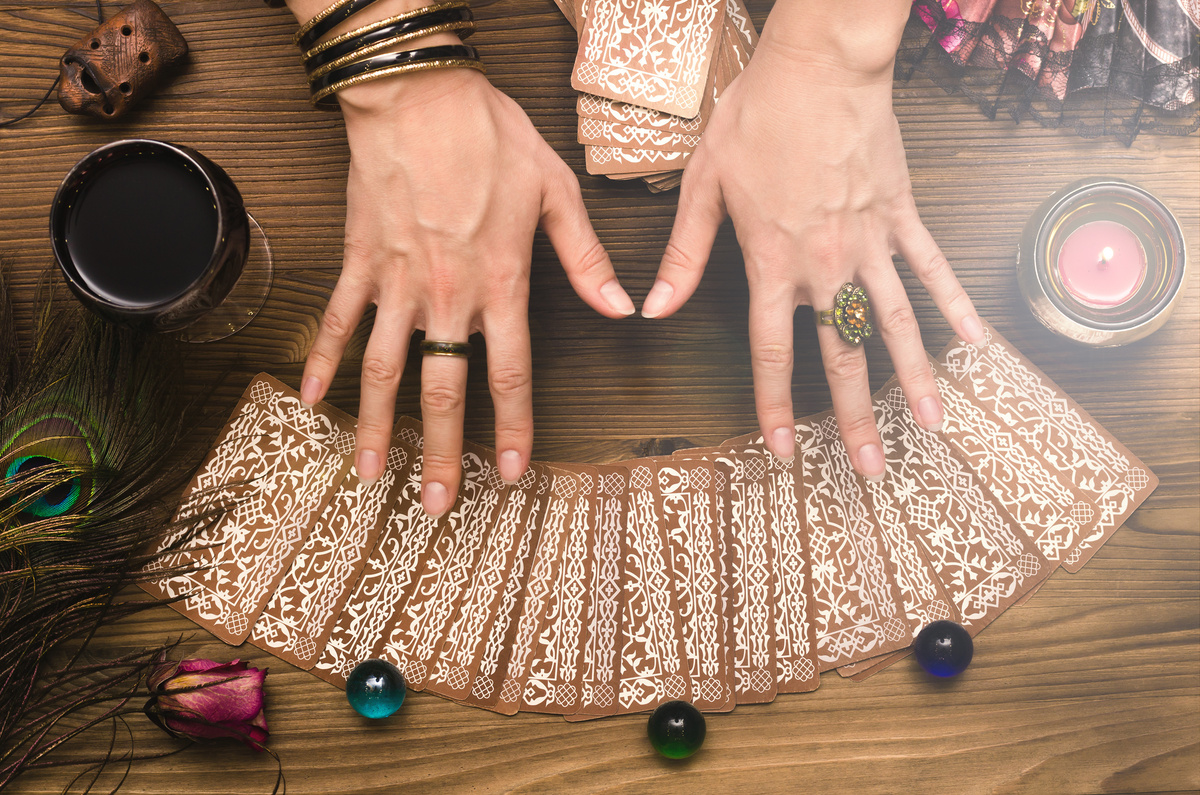
The Cartomancer is one who uses a common deck to uncover situations in the future, while the Tarologist uses the arcana to discover both the future and internal issues that have not been identified. Check out more about these differences below.
The fortune teller
The cartomancer is the one who practices cartomancy, i.e., uses the common deck or divinatory decks to predict the future. This technique can not be taught to just anyone, because it requires that it be done by sensitive individuals.
Usually, Cartomancy is passed on from generation to generation within families, so a person who is already familiar with the practice, has a connection with intuition and is also sensitive can do the reading accurately.
The tarologist
The Tarot, unlike cartomancy, does not use any deck, but the deck of Tarot, and there are several decks or types. The Tarologist does not use the arcana only to unravel the future, because the Tarot is also a therapeutic mechanism and self-knowledge.
The tarologist can opt for only one line of study and drawing, better saying, the therapeutic method or the divinatory, but nothing prevents him to use both techniques in his consultations. The tarologist must study the 78 arcana to make correct interpretations, so it is a technique that can be learned.
The tarologist's approach
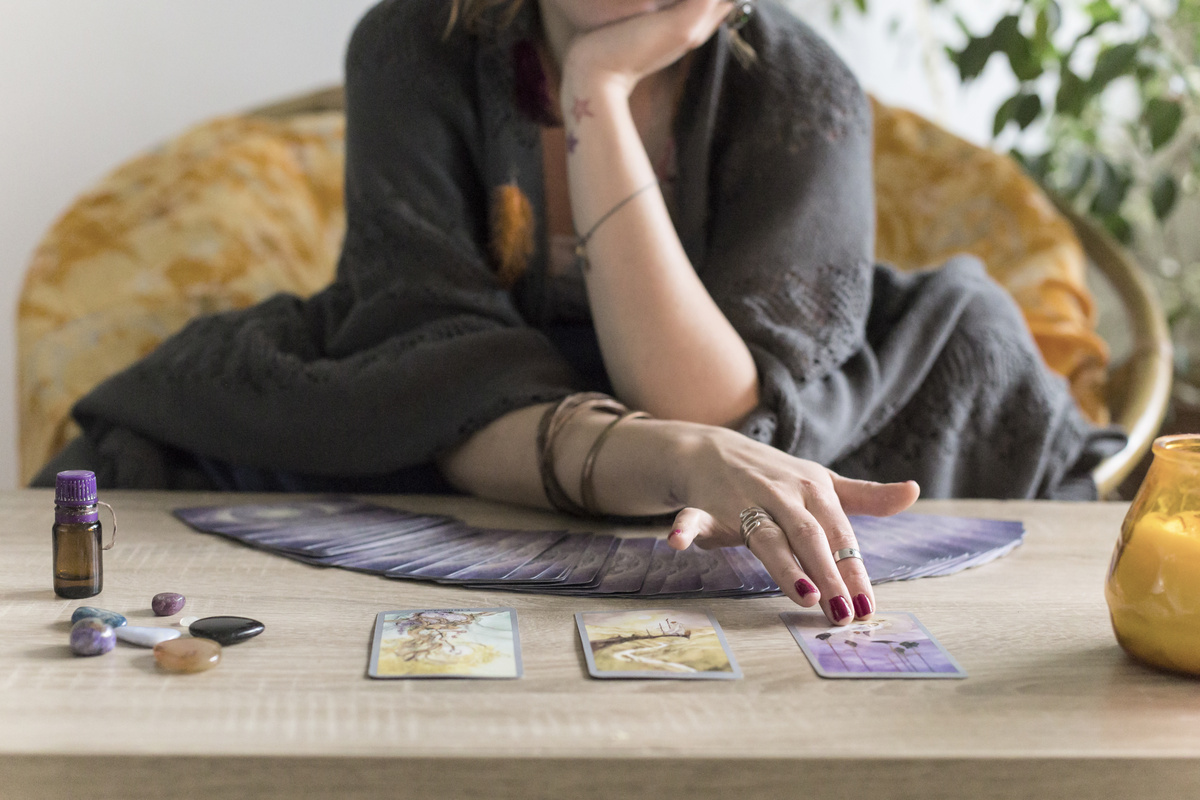
The practical approach of the tarologist varies according to the preference and study of each professional. But it is important that the consulter has familiarity with the cards and intimate connection with the intuition. See below how Tarot works in practice, in theory, who can become a tarologist and more.
Practice
The practical approach to Tarot is not unique, when a person is beginning in Tarot it is common to draw 3 cards, the first focusing on the problem, the second on the development of the issue and the third on the resolution and consequences.
Remembering that there are several other ways to draw the Tarot, including using many more cards. Thus, the tarologist chooses which method will be employed, according to their knowledge.
Theory
The tarologist has studied each of the 78 cards of the Tarot with diligence. He is familiar with the cards, so he recognizes the symbols of the arcana through his studies and also his intuition.
Each card has a unique meaning in an individual's journey, with the major arcana symbolizing more important and deeper spiritual and internal issues, while the minor arcana indicate one-off situations and changes.
How to become a tarologist
When you choose to be tarologist, you need to buy a deck, but this step can be difficult for some people, because they do not know which Tarot deck to choose, it is suggested to choose the arcana that feel attraction and familiarity, but it is also important to give preference to popular and traditional Tarot, as the Marseille and Rider Waite, this will facilitate the studies.
It is indicated that before the theoretical studies, the person has familiarity with the cards, for this it is necessary to analyze each symbol and discover what the blades mean intuitively. Then, the best choice is to start studying the major arcana, because only with these arcana is already possible to do the reading for yourself or for other people.
The studies can be done through the books that come with the Tarot decks, through other books sold separately, courses, videos, information on the internet, among others. Therefore, to be a tarologist it is not necessary to have a title or a certificate, but a course can shorten the path.
Who can be a tarologist
Anyone can be a tarologist, as long as they study hard. Thus, the Tarot is a method that can be taught, and there are many courses that help in the study of the arcana.
Therefore, it is not necessary to take a course to be a tarologist, the most important thing is to study each arcane to know how to read the cards, as well as, it is essential to connect with intuition.
There is also no ideal time to become a tarologist, it depends on the skills acquired over time. As one studies and practices, one will know if they are ready to perform draws for others.
Myths about Tarology
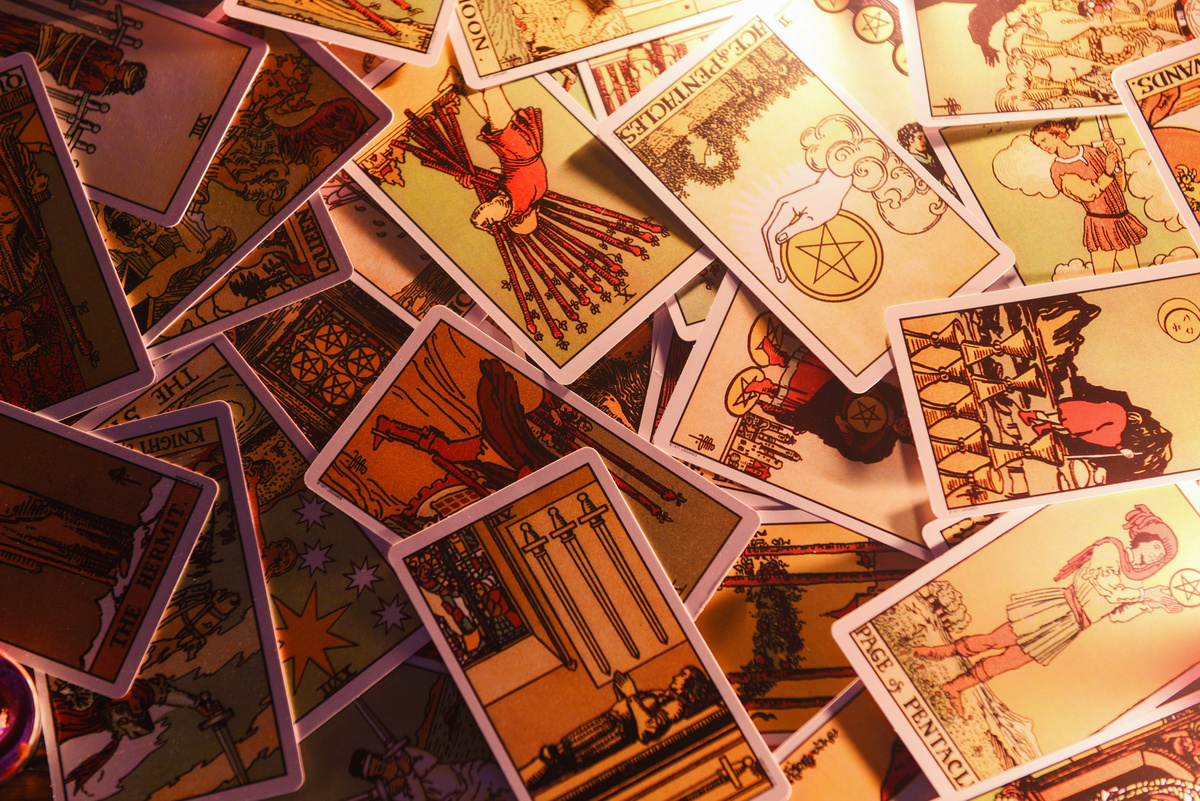
Many people believe that in Tarot there are cards that point to bad meanings, while others have positive meaning, but this idea is a mistake, because everything depends on the context in which the person is, the question that was asked and the interpretation of the tarologist. Understand better below.
There are negative cards
In Tarot, there are some cards that are considered negative, but not always they bring a meaning so bad. In fact everything depends on the question and interpretation.
Some arcana known as negative are the hanged man, death and the tower. The hanged man, in general, means that the individual is attached to something, but not necessarily something bad, it may just be a reflection to seek more freedom.
When a death card comes out, people tend to be apprehensive, because death is associated with something bad, but it also suggests changes and transformations, so it can have a positive meaning.
The tower symbolizes drastic changes, which can generate discomfort, but probably modifications were necessary. There are other cards that are seen as negative, such as the devil, but all fit this logic, so it depends on the context.
There are good and bad suits
There are suits which at first glance are considered good, but this analysis is mistaken, because everything depends on the question that was asked and the interpretation of the cards. Thus, a card considered positive may point to a negative meaning.
In this sense, the arcane "the world" symbolizes triumph and glory, but can also have a sense of betrayal and neglect. Similarly, the blade "the star" indicates hope, but can point to exaggerated romanticism. This also occurs with the cards that are perceived as negative.
The Tarot
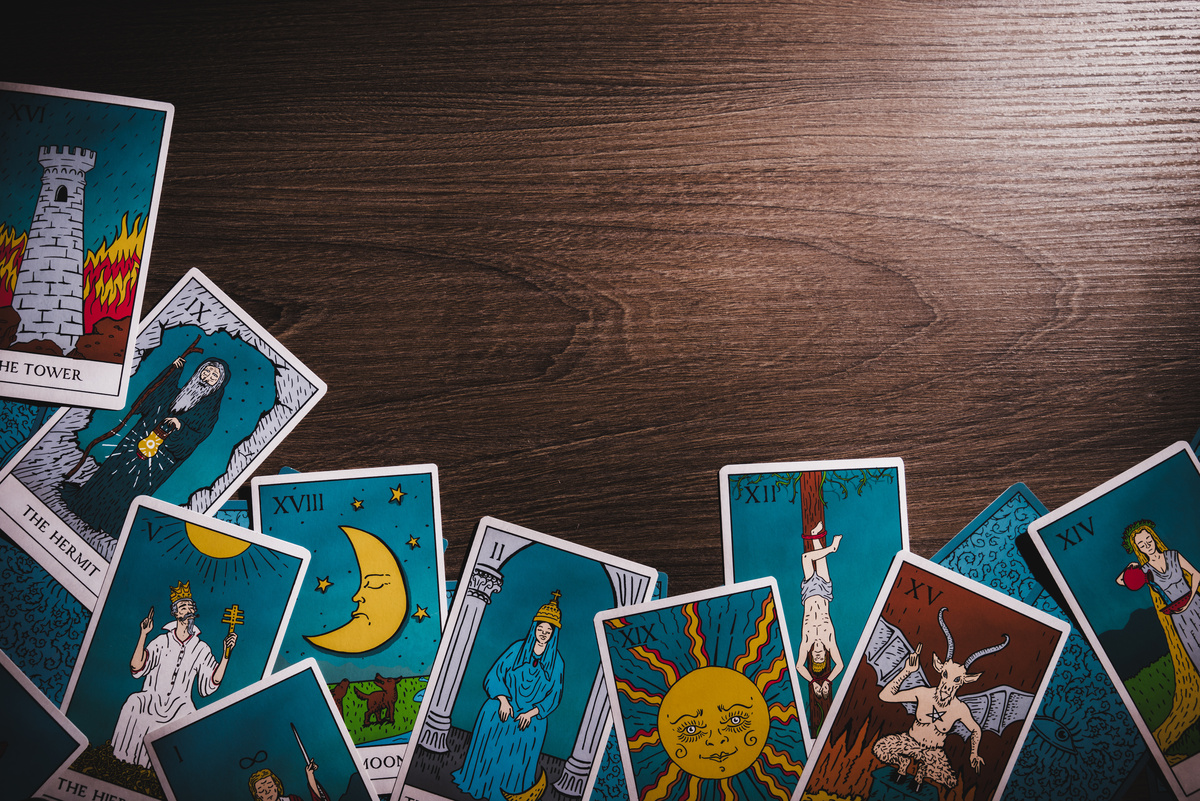
Tarot has been around for a long time, and its origin is not entirely clear. Some people don't know, but Tarot is quite different from the Gypsy Deck, although the two have similar functions. Learn more about these differences and other points below.
Origins
The origin of the Tarot is unknown, because it is not possible to confirm, with certainty, its place of origin. It is also not possible to be sure if the 78 cards were created together, or if the major arcana appeared first, giving rise to the minor arcana.
It is believed that the origin of the minor arcana is linked to the Mamluk warriors, who created the "Mamluk Tarot", which was spread across Europe during the Middle Ages. The major arcana, however, are believed to have been created in northern Italy.
Difference between Tarot and Gypsy Deck
The Tarot already differs from the Gypsy Deck right from the start with the number of cards, a tarot deck consists of 78 cards, which can be used only the major arcana or all blades. The Gypsy deck has 36 cards.
Tarot has existed for much longer than the Gypsy Deck, and the interpretation with the Gypsy Deck is simpler and more direct, but still accurate. In both cases it is essential that the consulter has familiarity with the cards and connection with intuition.
Can I play cards for someone else with no knowledge of tarology?
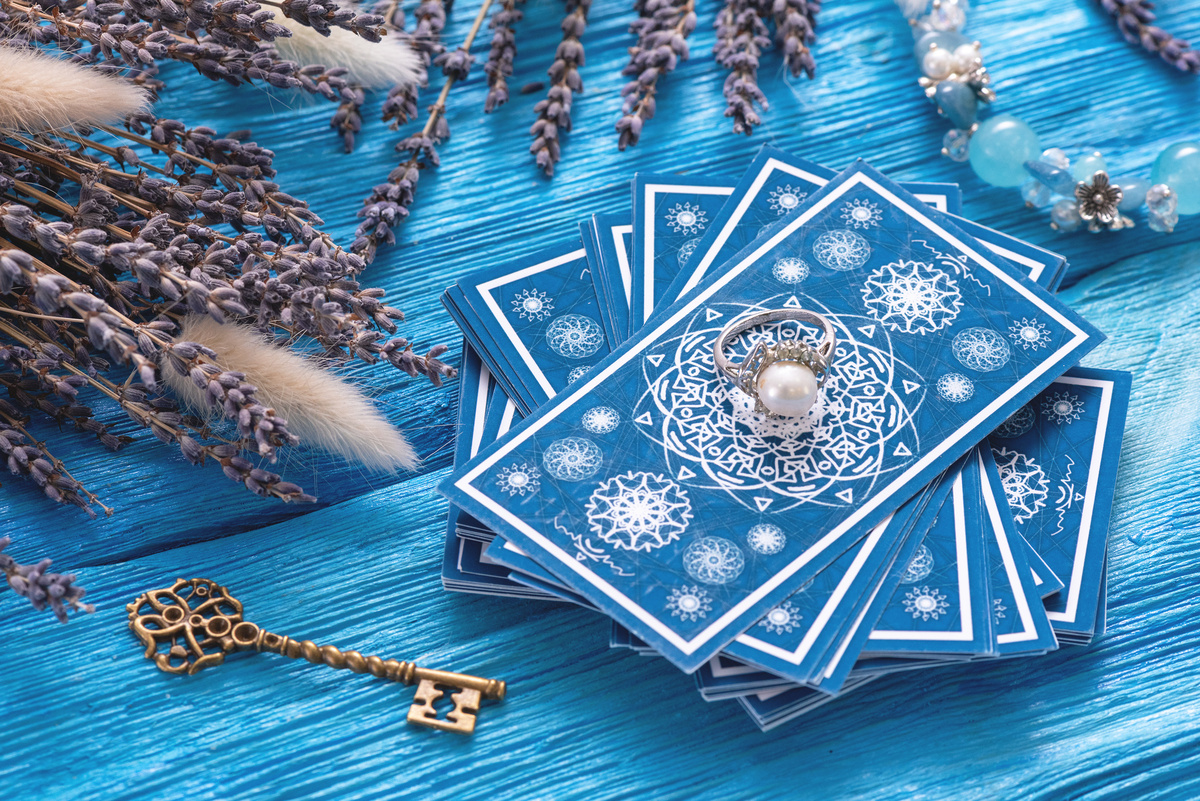
It is not advisable to play cards for another person without the necessary knowledge in tarology, so it is ideal to study before. After learning minimally about the Tarot, it is already possible to draw cards for people close to you, so you can gain experience.
Remembering that to make a Tarot drawing only the studies are not enough, the Tarot requires concentration and connection with intuition. Thus, the consulter can draw the cards and do the reading correctly.
In addition, having the Tarot in hands consultations for yourself can be made, including is a great tool for self-knowledge. Now you can employ the information in this article in a practical way and know more and more the world of Tarot.

